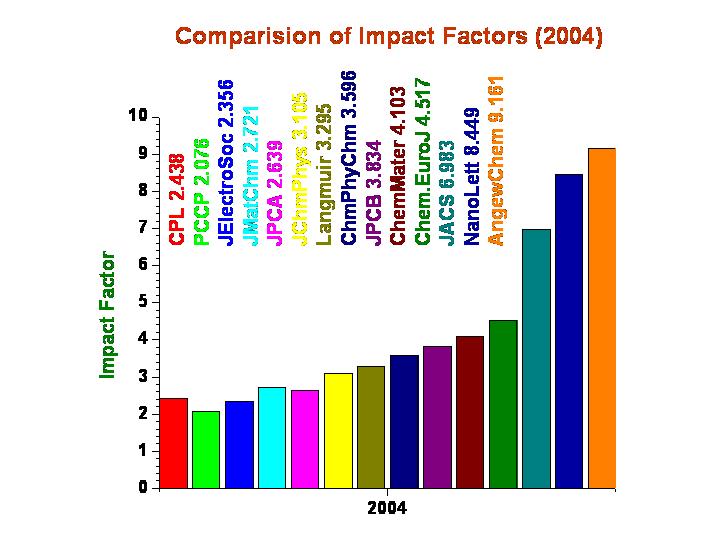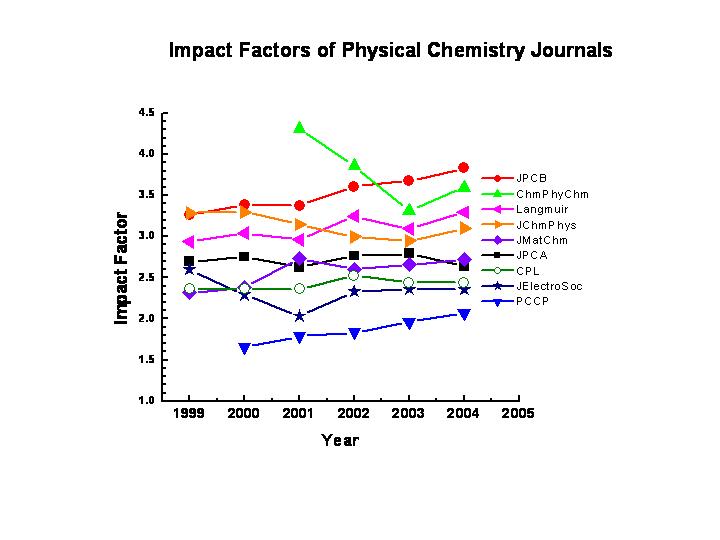IMPACT FACTOR vs. JOURNAL CITATION FREQUENCY
Source:
ISI Web of Science
In the beginning, during the late 1950s, it was just an innocent idea in Eugene Garfield's head. A Philadelphia researcher who described himself as a "documentation consultant," Mr. Garfield spent his free time thinking about scientific literature and how to mine information from it. He eventually dreamed up something he called an "impact factor," essentially a grading system for journals, that could help him pick out the most important publications from the ranks of lesser titles. .......from Chronicle of Higher Education, October 14, 2005
The increased publicity of ISI Impact Factor of scientific journals has led to some misgivings.
Please refer to the
article
published in Nature,
"Not-so-deep impact: Research
assessment rests too heavily on the inflated status of the impact factor"
Nature
Vol. 435, 1003 (23 June 2005). ".....For example,
we have analysed the citations of individual papers.in Nature and found
that 89% of last year’s figure was generated by just 25% of
our papers. ....."
Read the article from Chronicle of Higher Education, "The Number That's Devouring Science" -The impact factor, once a simple way to rank scientific journals, has become an unyielding yardstick for hiring, tenure, and grants. Read Chronicle of Higher Education, October 14, 2005
Similar viws have also been expressed in another article relatated to education and debate Why the impact factor of journals should not be used for evaluating research (BMJ 1997;314:497, 15 February)
In order to assess the real impact of published work, a Citation Frequency for published work has been determined for selected journals during 3 different periods: 1. Short term (2002-2004); 2. Medium term (1998-2004) and 3. Long term (1975-2004). The fraction of the published papers that show significant citations (25, 50 or 100+ citations); moderate citations (10+ citations) and No citations are compared for these three differemt periods.
For further details on the analysis of Citation Frequency please refer to
Citation Frequency =
Number of Papers
with “N” citations/Total Number of Published Papers x100
Where “N” represents
number of papers with at
least 100, 50, 25, 10 or no citations.
Here is a comparision of 30 most cited papers that were published in few selected journals during three different periods. The impact factor of these journals in the Physical Chemistry/Chemical Physics area vary from 2 - 9. It is interesting to note that all these journals have published many papers with impressive citations. If the scientific work is novel and significant, it is sure to make an impact irrespective of the journal impact factor.
(All data presented here was gathered from ISI Web of
Science on August 27, 2005)

